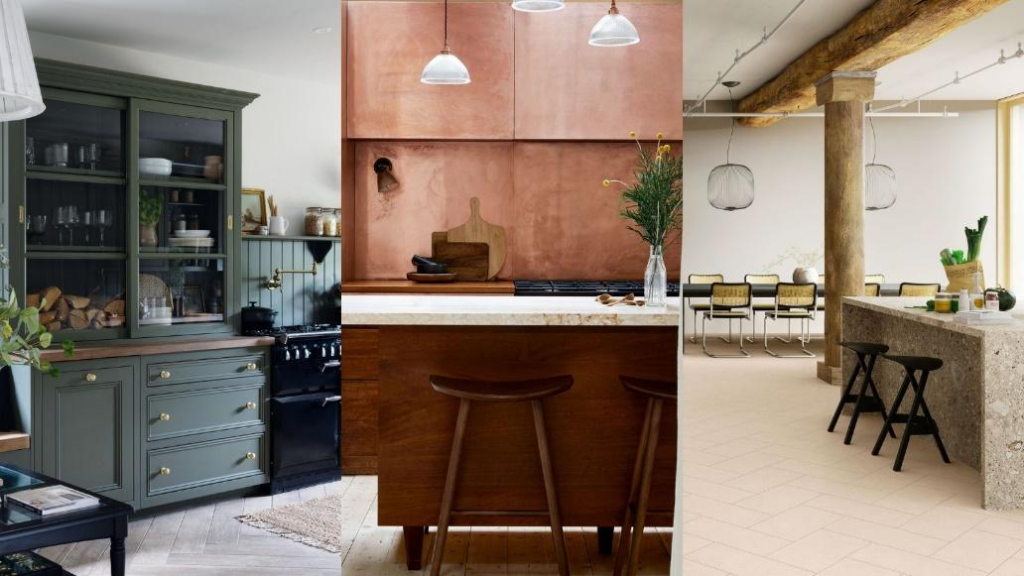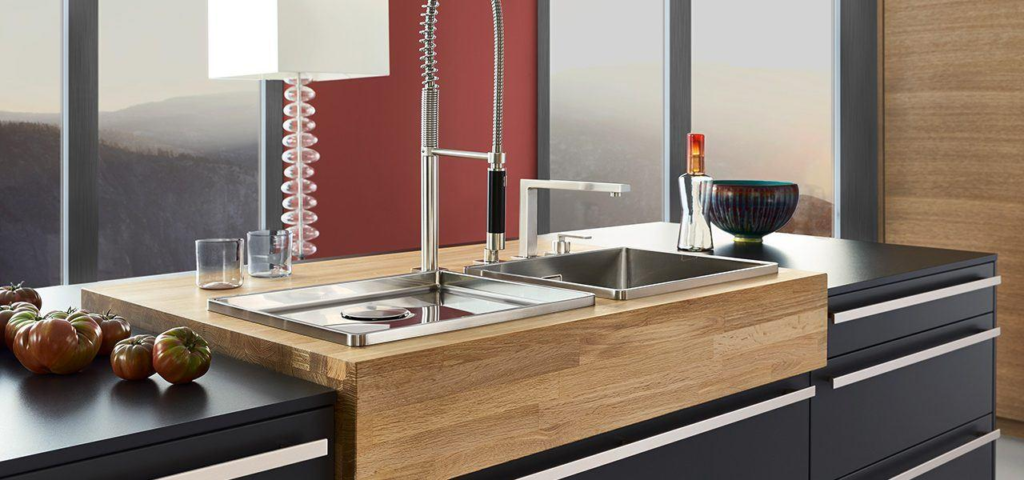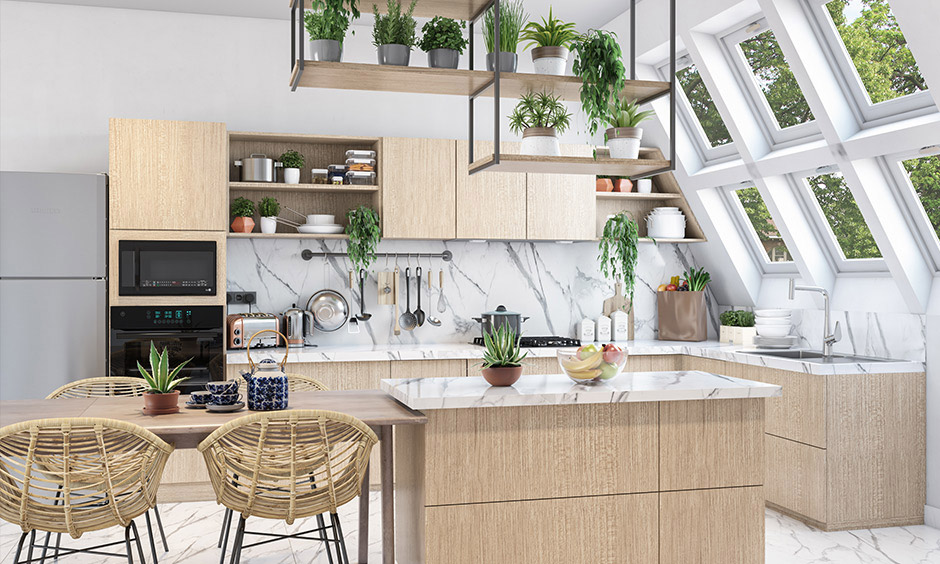Creating a sustainable kitchen is a great way to reduce your carbon footprint and make a positive impact on the environment. When designing your eco-friendly kitchen, it’s important to choose materials that are not only sustainable but also durable and functional. Here’s a guide to the eco-friendly materials you can use in your sustainable kitchen design.
Table of Contents
Bamboo
Bamboo is a popular material for sustainable kitchen design because it grows quickly and is highly renewable. It’s also a durable material that can withstand the wear and tear of everyday use. Bamboo can be used for cutting boards, utensils, and even flooring.

Recycled Glass
Recycled glass is a great material for countertops and backsplashes. It’s made from post-consumer recycled glass, which reduces waste and conserves resources. Recycled glass is also heat-resistant and easy to clean.
Reclaimed Wood
Reclaimed wood is a sustainable and stylish choice for kitchen cabinets, flooring, and even countertops. It’s made from salvaged wood from old buildings and structures, reducing the demand for new timber. Reclaimed wood has a unique character and can add warmth and texture to your kitchen design.

Cork
Cork is a sustainable and renewable material that can be used for flooring, countertops, and even wall coverings. It’s harvested from the bark of cork oak trees, which can be harvested every 9-10 years without harming the tree. Cork is also naturally resistant to water and mold, making it a great choice for kitchens.
Stainless Steel
Stainless steel is a durable and sustainable material that can be used for appliances, countertops, and even backsplashes. It’s a long-lasting material that can withstand high temperatures, making it ideal for cooking and food preparation. Stainless steel is also easy to clean and maintain.

Terrazzo
Terrazzo is a composite material made from chips of recycled glass, marble, or granite set in concrete or resin. It’s a versatile material that can be used for countertops, flooring, and even backsplashes. Terrazzo is durable, easy to clean, and can add a unique and colorful touch to your kitchen design.

Recycled Paper
Recycled paper countertops are a sustainable and eco-friendly choice for your kitchen. They’re made from recycled paper and resin, which creates a durable and heat-resistant surface. Recycled paper countertops come in a variety of colors and patterns, making them a stylish and sustainable choice for your kitchen design.
Stone
Stone is a natural and durable material that can be used for countertops, flooring, and even backsplashes. Granite, marble, and soapstone are all popular choices for sustainable kitchen design. Stone is a long-lasting material that can withstand high temperatures and heavy use, making it ideal for cooking and food preparation.

Concrete
Concrete is a sustainable and versatile material that can be used for countertops, flooring, and even sinks. It’s durable and long-lasting and can be customized to fit your kitchen design. Concrete can also be mixed with recycled materials, such as glass or paper, to create a more eco-friendly option.
Natural Linoleum
Natural linoleum is a sustainable and eco-friendly choice for kitchen flooring. It’s made from natural materials such as linseed oil, pine resin, and wood flour. Natural linoleum is durable, easy to clean, and comes in a variety of colors and patterns.
Choose renewable materials
Renewable materials are those that can be replenished over time, such as bamboo, cork, or reclaimed wood. These materials are sustainable because they can be harvested without depleting natural resources. Bamboo, for example, is a fast-growing grass that can be harvested every 3-5 years, making it a great alternative to hardwood. Cork is another sustainable material that comes from the bark of cork oak trees and can be harvested without harming the tree.
Use recycled materials
Recycling is an important part of sustainable design. Using recycled materials in your kitchen can reduce waste and energy consumption. For example, recycled glass countertops are made from recycled glass bottles and can be a durable and eco-friendly alternative to traditional countertops. Recycled metal tiles or panels can also be used as a backsplash or accent wall.
Select low VOC materials.
Volatile organic compounds (VOCs) are chemicals that are emitted into the atmosphere by a variety of building products, including paint, adhesives, and sealants. These compounds can cause health concerns such as breathing issues, headaches, and nausea. Using low VOC products can help to enhance indoor air quality and decrease your exposure to hazardous chemicals. Look for low VOC or zero VOC labels on products.

.Choose energy-saving appliances.
Energy-efficient appliances can help you save money on your energy costs while also lowering your carbon footprint. Look for appliances with the ENERGY STAR certification, which indicates that they fulfil the U.S. Environmental Protection Agency’s strict energy efficiency criteria. When compared to standard appliances, ENERGY STAR appliances can save you up to 30% on your energy expenditures.
In conclusion, designing a sustainable kitchen is a great way to reduce your environmental impact and create a functional and stylish space. When choosing materials for your eco-friendly kitchen design, look for options that are renewable, recycled, or reclaimed.
